NADH Supplement Review
NADH is a naturally-occurring compound found in the cells of all living organisms – including plants, animals, and humans.
Our cells require NADH to produce cellular energy. Cells rely on this energy for everything they do. Ultimately, NADH is responsible for memory, immune system functionality, DNA repair, anti-aging, and many more critical physiological functions.
That’s why many people believe taking an NADH supplement can revitalize their energy and dramatically improve their overall health. Instead of taking an “NADH” supplement, however, most people take a niacin or niacinamide supplement, which gets turned into NADH within the body.
What is NADH?
NADH stands for Nicotinamide adenine dinucleotide (NADH). It’s a form of vitamin B3, which is also known as niacin. NADH is also known as coenzyme 1.
Our bodies can produce NADH from dietary niacin or niacinamide. There are high levels of niacin in chicken, pork, beef, peanuts, mushrooms, avocado, and many other common foods. As a result, most of us are not NADH-deficient.
What Does NADH Do?
Without NADH, our bodies cannot produce cellular energy. Cellular energy is responsible for our physical and mental energy.
Additionally, NADH boosts cellular repair of DNA. DNA, as you may already know, is the blueprint our cells use to develop your body. NADH is also involved in the synthesis of certain neurochemicals and hormones used in the brain.
How Does NADH Work?
NADH works by increasing the rate of chemical reactions within our mitochondria. As you may remember from junior high biology, the mitochondria are the “power plants” of our cells. The mitochondria also repair the genetic material within our cells, also known as “DNA”.
Some of the NADH our bodies produce goes towards the mitochondria. Any leftover NADH acts as an antioxidant, which means it travels around the body destroying harmful free radicals. Free radicals are any unstable molecules with an unpaired electron. They’re extremely reactive and are the cause of many common illnesses and diseases – including aging.
By targeting these free radicals, NADH can reduce the effects of aging, reduce “mental fog” and boost cell repair. And it does all of this will also supercharging your cellular energy supply.
Where Do We Get NADH?
As mentioned above, our bodies produce NADH naturally when we eat niacin or niacinamide. This is why most of us are not considered NADH deficient. Here are some of the most common sources of NADH:
— Mushrooms
— Beef
— Turkey
— Chicken
— Pork
— Avocado
— Peanuts
— Green peas
Consuming niacin from these foods will in turn boost the production of NADH within the body. If you’re not getting enough NADH, or don’t eat enough niacin-enriched foods, then you should consider taking a niacin supplement.
Many vegetarians and vegans take a niacin supplement, for example, because they don’t consume any meat. Look for a niacin or niacinamide supplement online or in your local health food store.
What Happens When We Don’t Get Enough NADH?
Although NADH deficiency is rare, it’s not completely unheard of: Japan famously became niacin deficient after World War II. The country was not importing enough niacin-enriched food and the population was living almost entirely off rice.
This led to nationwide lethargy as well as the three “d symptoms”, including dementia, dermatitis, and diarrhea. Eventually, physicians discovered the problem and cured their country of niacin deficiency.
Niacin deficiency is known as Pellagra and it leads to some serious health problems. In addition to the three “D symptoms” listed above, patients may experience mental confusion, muscle weakness, aggression, sensitivity to sunlight, lack of coordination, a “beefy red” tongue, and red skin lesions. It’s not pretty.
When our bodies don’t get enough niacin, they can’t produce enough NADH. So niacin deficiency and NADH deficiency are virtually identical in terms of symptoms.
Who Should Take Niacin Supplements?
As mentioned above, Niacin deficiency (and by extension, NADH deficiency) is rare. If you eat an average amount of meat or other foods listed above, your body may already be creating more than enough NADH from your dietary niacin.
However, I also mentioned above that any excess niacin you’re taking isn’t just flushed from your body: instead, it goes to work as an antioxidant, removing dangerous free radicals across your body. This is thought to reduce the effects of aging and slow cognitive decline.
With that in mind, here are some of the people who may benefit from taking a niacin supplement:
— Anyone suffering from degenerative brain conditions like Alzheimer’s or dementia
— Anyone suffering from chronic fatigue syndrome (early evidence shows that NADH can reduce the effects of CFS when paired with traditional CFS medication)
— Parkinson’s disease (although clinical testing has provided mixed results thus far)
— Boosting immune system functionality
— Boosting memory, concentration, focus, and cognitive ability
— Treating depression
— Lowering cholesterol levels and lowering high blood pressure
— Alcoholics who need to protect their liver from further damage (in studies, NADH has been shown to boost the ability of your liver to treat alcohol).
How Much Niacin Do I Need?
I can’t give you an exact number for how much NADH you need on a daily basis, since it varies widely according to the cells within your body as well as your age, gender, and overall health.
However, I can give you the approximate recommended dosage for niacin and niacinamide, which is turned into NADH in your body.
Doctors recommend taking between 2.5 mg to 10 mg of niacin on a daily basis. However, if you have certain physiological conditions that may reduce cellular energy or cognitive ability – like dementia – your doctor may increase the dosage. Talk to your physician to find a recommended daily niacin amount that’s right for you.
Recommended Niacin dosages are often broken down like this:
Children: Between 2 to 16 mg per day, depending on age
Men: 16 mg per day
Women: 14 mg per day
Pregnant Women: 18 mg per day
Breastfeeding Women: 17 mg per day
Maximum Daily Intake For Adults Of All Ages: 35 mg per day
Meanwhile, if you’re using niacin to treat high cholesterol, doctors may recommend taking as much as 2 to 3 grams or more.
Are There Any NADH Side Effects?
NADH has been well-tolerated in virtually all clinical studies performed thus far. As a result, WebMD says:
“NADH seems safe for most people when used appropriately and short-term, up to 12 weeks. Most people do not experience any side effects when taking the recommended amount each day, which is 10 mg.”
However, not enough is known about the effects of NADH on women who are pregnant or breastfeeding, so it’s recommended that you err on the side of caution.
That being said, doctors will often prescribe up to 2 to 3 grams of niacin for treating cholesterol. Even in those high doses, niacin side effects are minimal and the compound is well-tolerated.
Buying NADH Supplements Online
NADH supplements have been around for a few years now. However, their effectiveness has rarely been demonstrated in clinical studies. NADH supplements have not been approved by the FDA and many of them contain a strange mixture of synthetic ingredients, artificial compounds, and fillers.
Instead of taking an NADH supplements, most doctors will recommend taking a niacin supplement. Taking a niacin supplement raises levels of NADH within your body in a more natural way. You can find niacin supplements on any store shelf – in many cases, they’re labelled as vitamin B3 supplements.
Whether you’re shopping online or buying in-store, there are plenty of NADH and niacin supplements on the market today. Niacin supplements are reinforced by real scientific benefits and clinical studies, while NADH supplements have less scientific approval. Fortunately, both supplements claim to have similar effects on the body and can reduce cholesterol, improve cognition, and boost cellular energy.


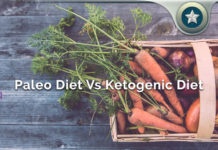
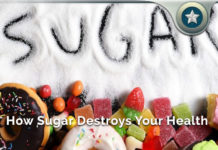
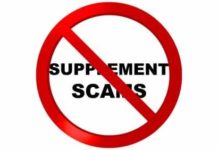
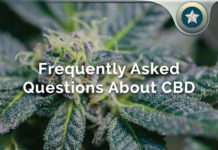
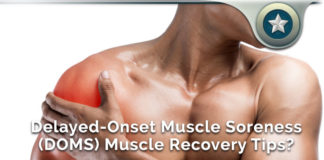
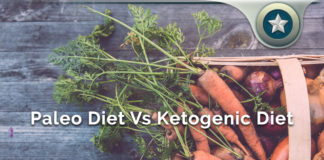

Instead of IV treatment give yourself a niacin enemas with coffee
I am getting ready to detox myself and have done a lot of hours of research. NADH is the treatment for me but can not afford the IV treatment. I have said for years that vitamins are the way to go for healthy less painful detox. I was right and now I have discovered the right one. Please please help me to find a reliable source of NADH. Or a doctor that will do IV treatment at an affordable price.
L Taylor
Where can I puchase premium quality NADH.Want to puchase from a credible US based Lab/pharmaceutical Co.Thanking you in advance. Rowena B
PS Can’t afford program that gives I’V therapy. ..Detoxedmyself 6 months ago this is the number one component that will help with healing along with D-phenylalanine. Pray you can help
Has there been any recorded cases of NADH toxicity? It seems that, if there is a function for excess NADH, it is unlikely that somebody can become toxic. However, sometimes supplemental vitamins and minerals act differently than ones that are ingested naturally.